Yellowstone contains around 60 percent of the world’s geysers, as well as the most famous in the world. Old Faithful erupts around 20 times a day and the park service predicts the eruptions within a period of 10 minutes. Yellowstone provides geyser time predictions for six geysers in the park: Old Faithful, Castle, Daisy, Grand, Great Fountain, and Riverside.
Geysers are one of five types of hydrothermal features in the park – hot springs that erupt periodically to release the pressure caused by constrictions in their plumbing.
There are two types of geysers in Yellowstone National Park: cone geysers and fountain geysers. A cone geyser is a narrow jet of water, usually erupting from a cone, formed by the deposit of silica around the vent. A fountain geyser is a large opening at the surface that shoots water in various directions.
Geysers have formed in the area due to the fractures in the ground that permit water to seep in and become superheated, as well as the the constricted channels that funnel the water through the geyser.
Beehive Geyser
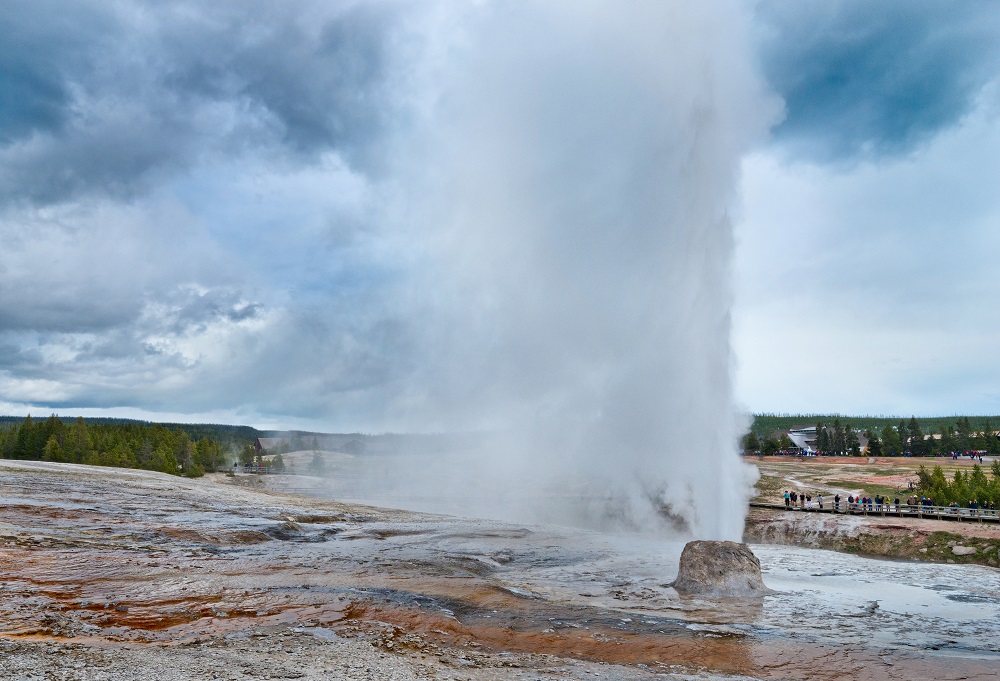
Beehive is a cone geyser in the Upper Geyser Basin. It is named for the 4 foot tall cone that resembles a beehive. It shoots water up to 190 feet, usually up to twice each day.
Castle Geyser
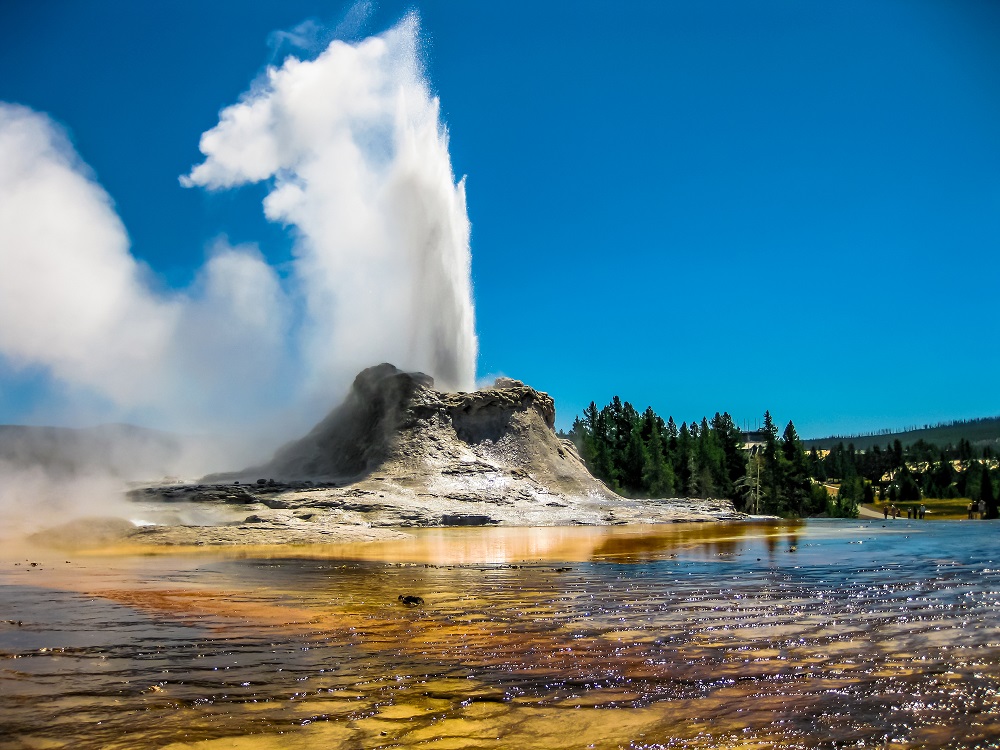
Castle Geyser is a cone geyser in the Upper Geyser Basin. It is known for its large cone, with a height of 30 feet tall, which appears to resemble a castle and may be the oldest of the geysers in the basin. It erupts roughly every 10 to 12 hours to a height of up to 100 feet.
Cliff Geyser
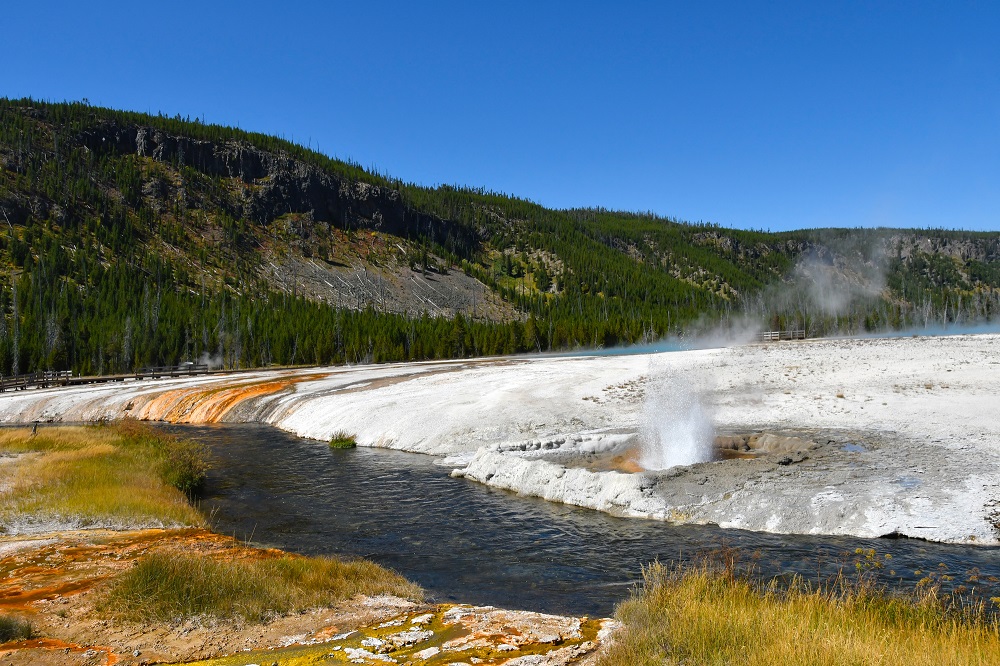
Cliff Geyser is a fountain geyser that is located in the Black Sand Basin.
Clepsydra Geyser
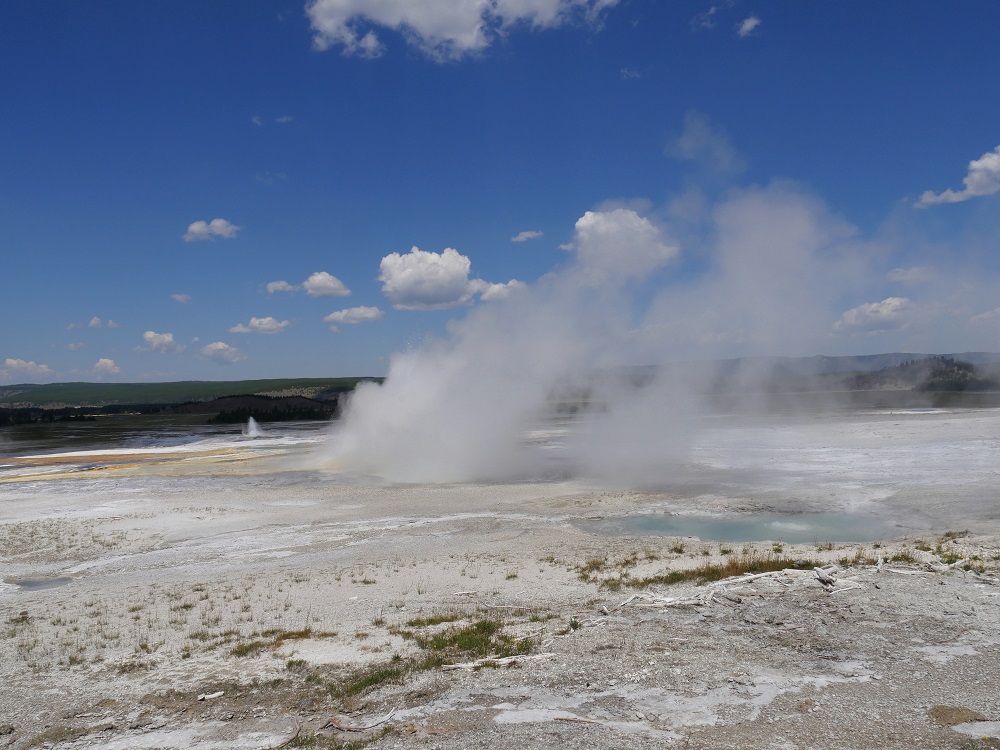
Its name is greek for water clock, given in 1878 because the geyser erupted every three minutes. The geyser is in the Lower Geyser Basin of Yellowstone, near Fountain Paint Pots along Firehole Lake Drive.
Echinus Geyser
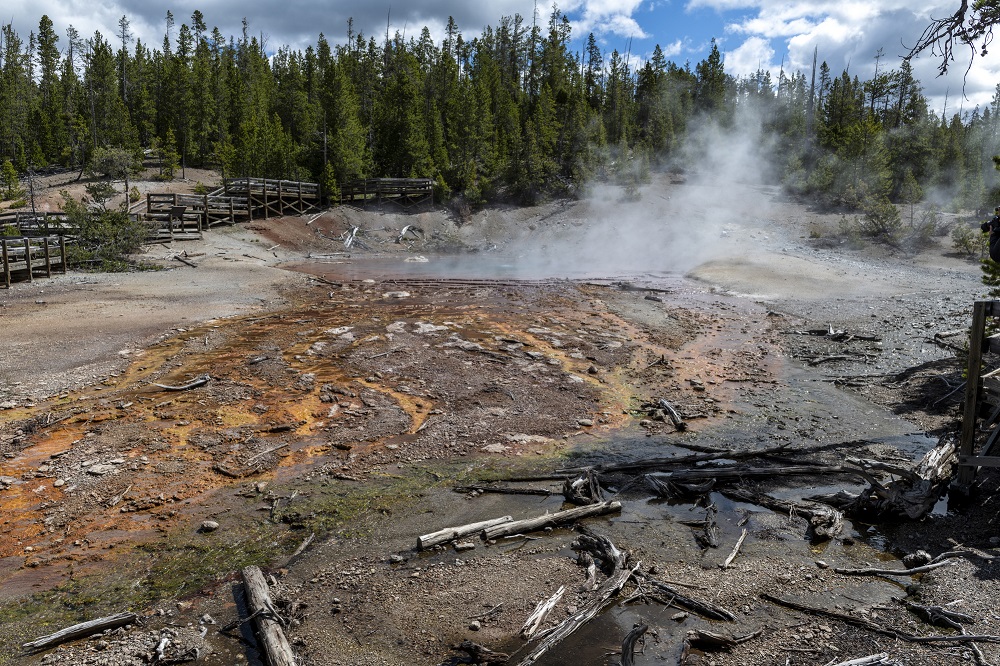
This geyser with an irregular eruption pattern (despite a prior history of eruptions every 45 to 75 minutes in the 70s and 80s) is located in the Norris Geyser Basin. The eruptions throw a mass of water 40 to 60 feet in the air (possibly as high as 80 feet). Visitors can get close to it on the boardwalk, which has made it popular.
Grand Geyser
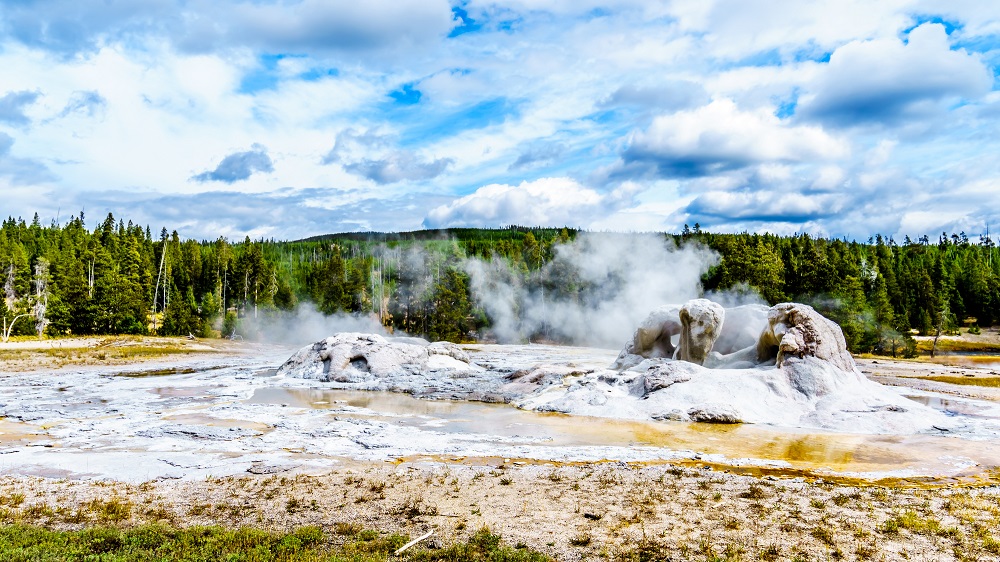
This fountain geyser is located in Upper Geyser Basin. It is the tallest predictable geyser in the world, erupting from a pool every 7-15 hours. The average eruption lasts between 9 and 12 minutes including 1-4 bursts that can reach up to 200 feet.
Great Fountain Geyser
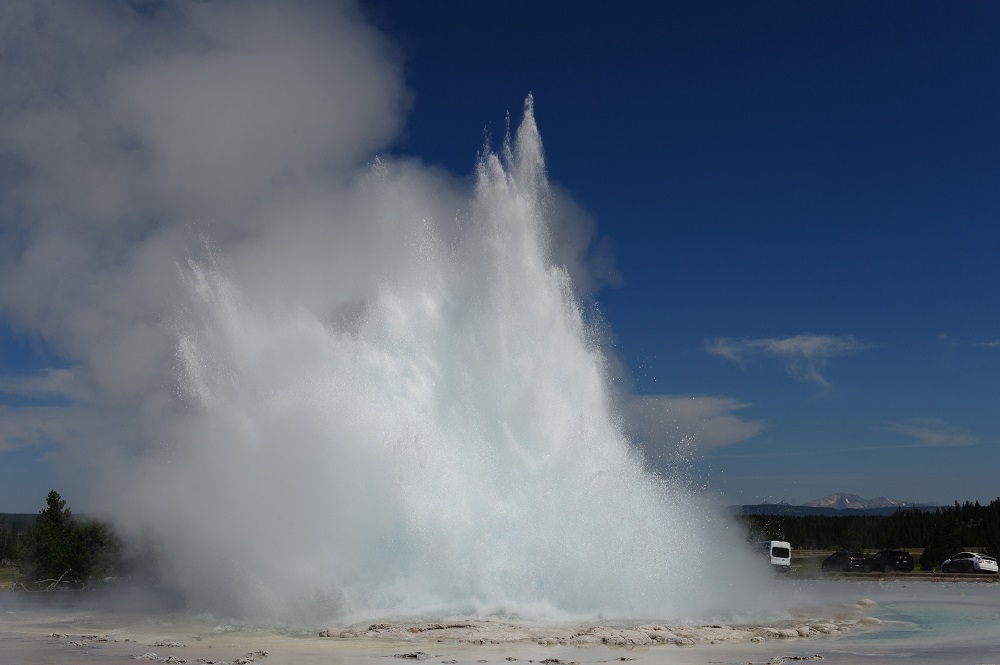
Great Fountain is a fountain geyser located in the Lower Geyser Basin. It is located on Lake Firehole Drive and is the only predicted geyser in the Lower Geyser Basin. The eruptions can shoot water to a height of around 220 feet, with eruptions lasting one to two hours via a series of short bursts followed by quiet periods.
Old Faithful
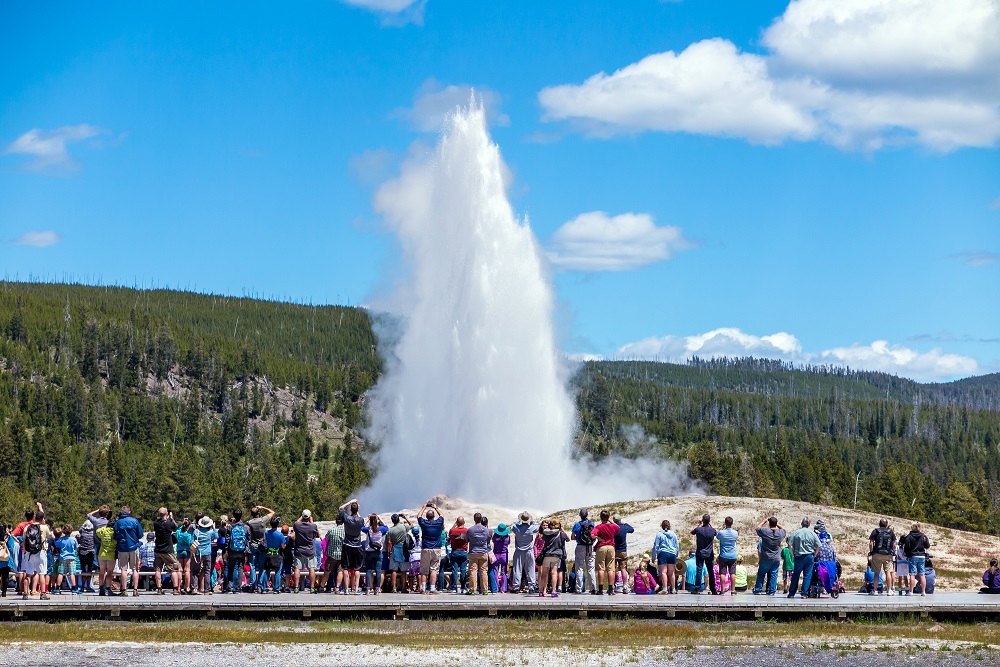
Pearl Geyser
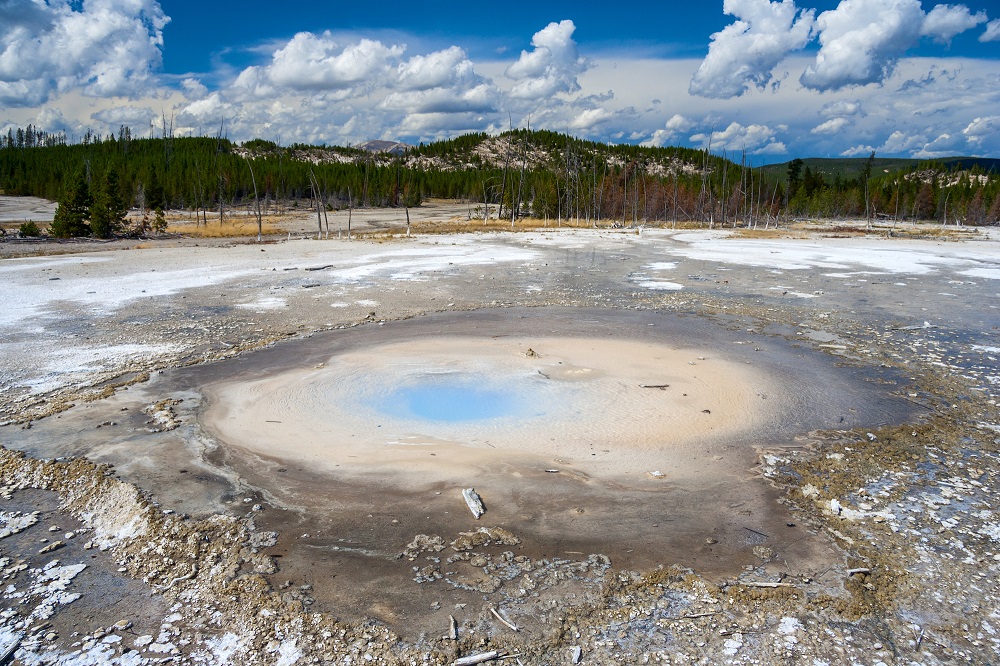
Pearl is a pool/fountain geyser that sprays water eight feet high when erupting. The geyser erupted in 2017 after a 12 year period of dormancy. It is located in the Back Basin of Norris Geyser Basin.
Riverside Geyser
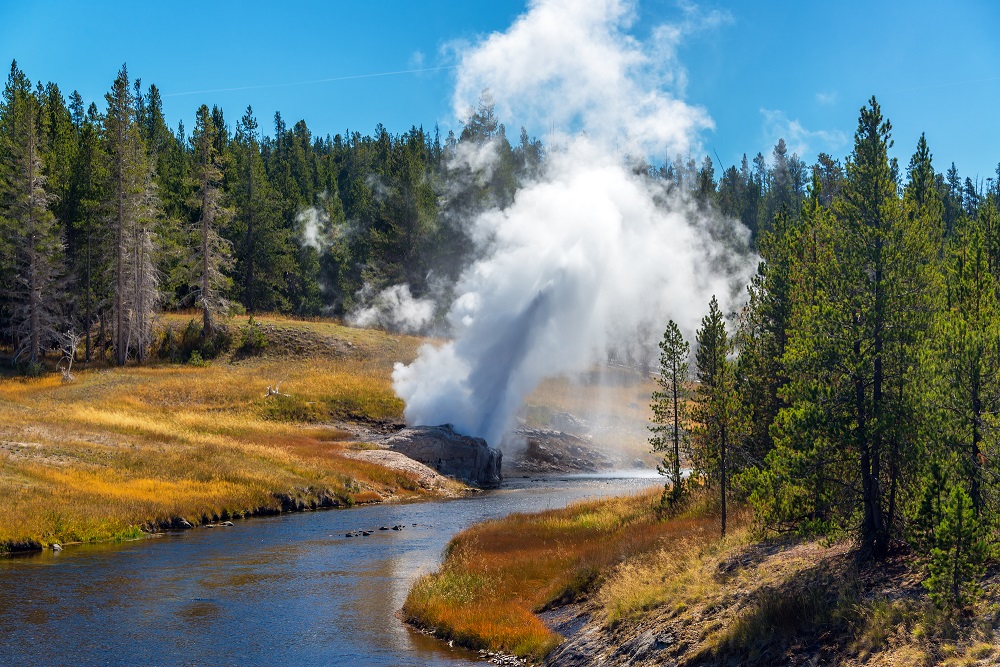
This geyser is located along the Firehole River within the Upper Geyser Basin. The geyser shoots water and steam in an arch over the river to a height of 75 feet. Eruptions occur roughly six hours apart.
Steamboat Geyser
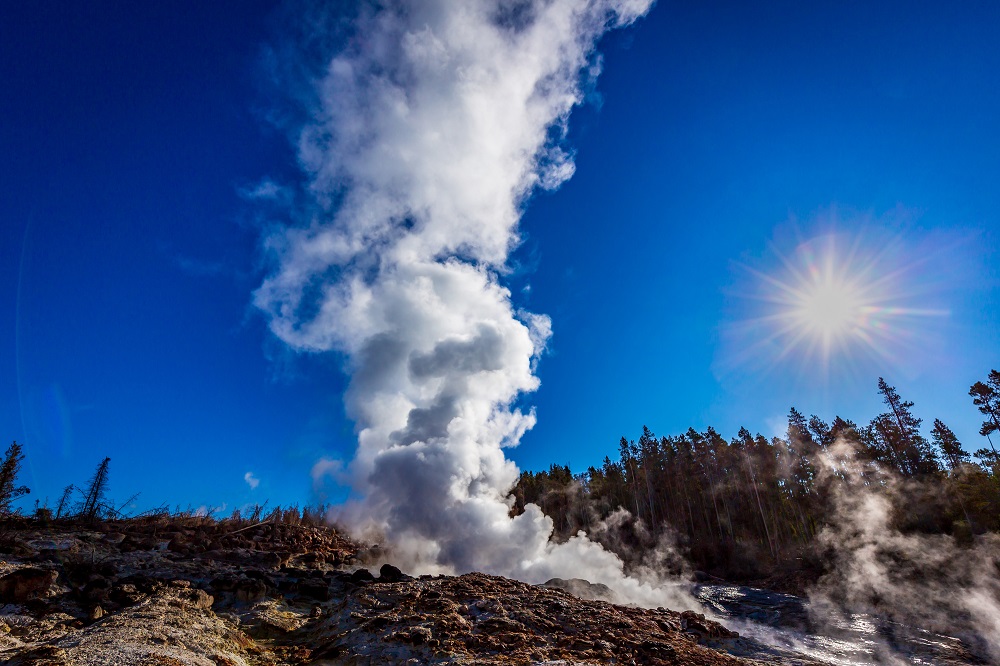
Steamboat is the world’s tallest active geyser, with its highest eruptions reaching heights of 300 to 400 feet. It is located in the Back Basin of Norris Geyser Basin in Yellowstone. There are two vents in the geyser, with the north vent producing the highest water eruptions. Steamboat geyser’s past includes long periods of dormancy, but it has been quite active in 2018 and 2019.
White Dome Geyser
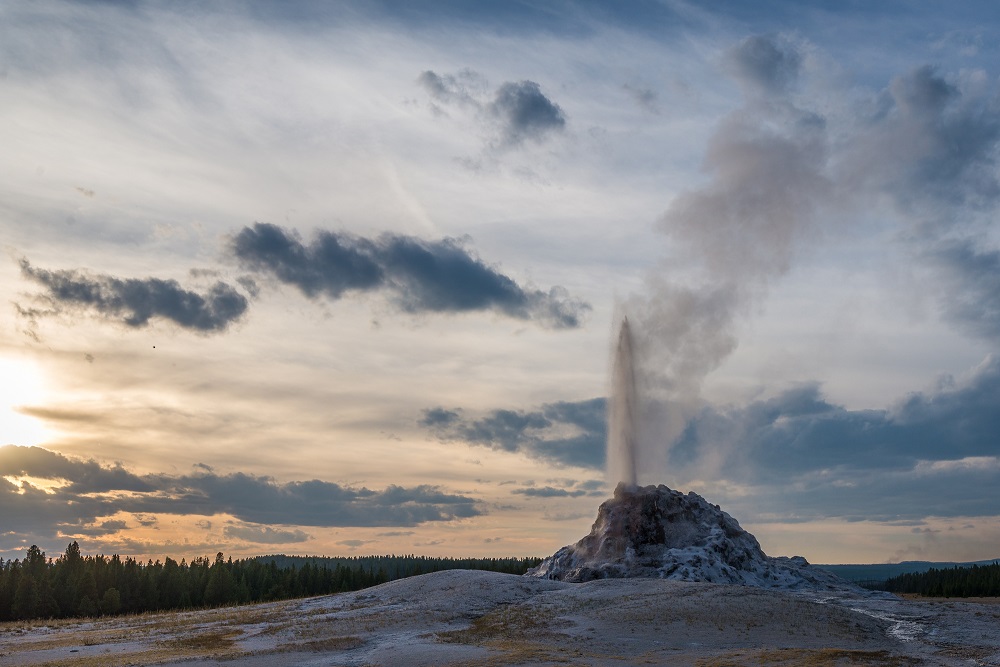
This cone geyser is located in the Lower Geyser Basin. It is one of the largest cones in Yellowstone, at a height of around 12 feet. It generates medium sized eruptions of approximately 30 feet.